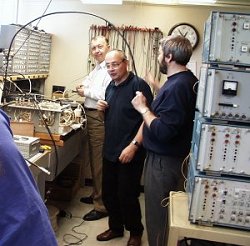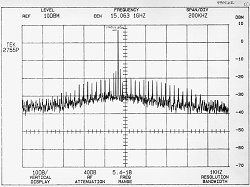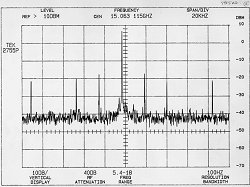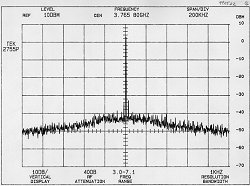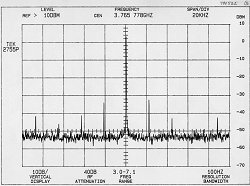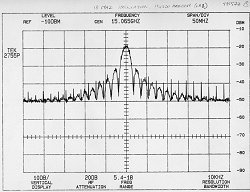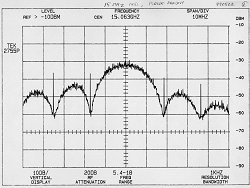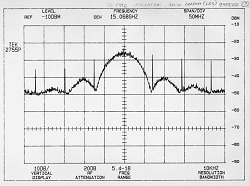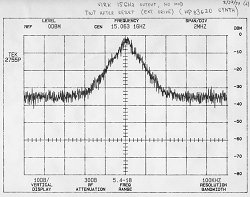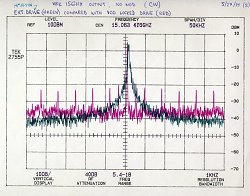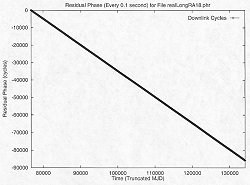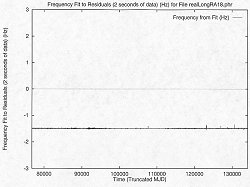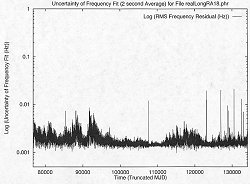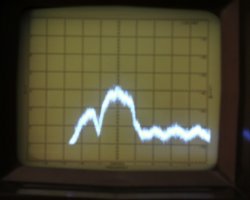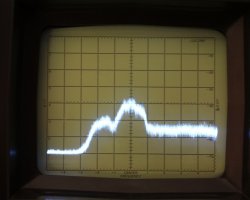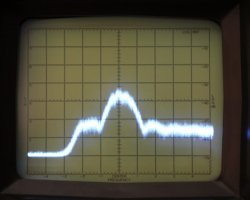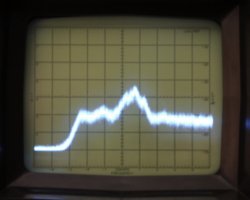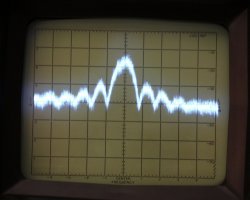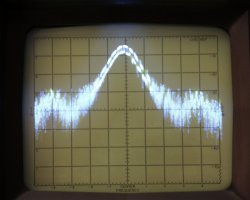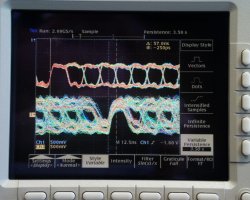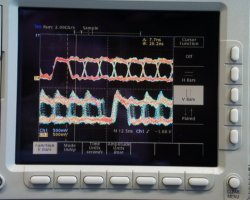|
PARTICIPANTS:
From Russian ASC: Alexander Smirnov, Boris Kanevsky SUMMARY: The Russian radio astronomy satellite, "RadioAstron", is in the construction phase in Russia. The engineering prototype of the RF modules used in the satellite was brought to the US at the invitation of the JPL and NRAO for compatibility tests. The equipment was in Green Bank from May 20 thru May 28, then traveled to JPL in Pasadena where further tests will be performed thru June 10. Results of the Green Bank tests show that the X-band timing system performs well with our earth station. Overnight 16 hour phase tests show phase residuals similar to those logged from the VSOP satellite. However, the wide band data link at 15 GHz appears to have modulation problems. No acceptable data error rates were achievable in field tests with the Green Bank earth station, despite good results achieved over the identical path with the NRAO satellite simulator. Time prohibited further tests to identify the problem. Pictures of the Russian visit, including setup views, some spectrum analyzer and scope displays from the tests, and off-site activities, were posted at www.gb.nrao.edu/~dpedtke/radioastron/. See also a report by Toney Minter discussing the round trip phase test results. For Reference:The RadioAstron system receives an uplink CW reference at 7.215255 GHz, transmits a downlink timing carrier at 8.472960 (both referred to here as X-band), and a data signal at 15.063040 GHz (K-band) which is QPSK modulated with data at 18, 36, or 72 MHz data rates. An internal reference frequency of 14.710 MHz is used to lock all frequencies to the received X-band uplink.
CHRONOLOGY: Thursday 5/20
Saturday 5/22 Monday 5/24 Tuesday 5/25 A 10 minute round-trip lock test of phase stability showed good results. But the data path was not good. Received spectrum at the earth station was not smooth or stable. This was probably due to being in the near field of the earth station, and a tree with leaves blowing was partially blocking the path. We decide to reflect the signal off of the site water tower. Stable signals were then possible but the error rate was still found to be high.
Wednesday 5/26 Thursday 5/27 It must be concluded that the problem is inside the VIRK-M module, probably with the modulator. A check of the demodulated analog signals coming from the Russian test set demodulator show much jitter (see scope photos). They are feeding this demodulator with 1 mW of signal, and it has no clock recovery circuitry - the clock is provided directly around the RF link. The ECL modulator inputs were measured for DC bias with inputs disconnected. The bias point was at half-way point for ECL, -1.4 volts. Apparently, the external signals are expected to be AC coupled. Their schematic of the modulator driver shows that the termination to 50 ohms is AC coupled, with the DC bias applied thru greater than 1K ohm. Even so, with our data generator connected (with it's internal pull-down resistors), the data levels were acceptable ECL levels (-1.1 and -1.8 volts), and they are buffered by internal ECL logic, so input levels would not affect the QPSK modulator. Also note that during these tests, an anomalous mode was detected in the K-band transmitter, which the Russians were aware of. The K-band output appeared to have a 500 Hz square wave amplitude modulated onto it (see spectral plot). Power down and back on cleared this problem. Later it was noted that the fan set used to cool the TWT heatsink was not turned on, and this was blamed for the anomalous signal. Friday 5/28 After the lock range testing, the equipment was torn down and packed. The equipment left Green Bank at noon. CONCLUSIONS: 1) All tests requested by Larry D'addario were completed, with the possible exception of no X-band transmitter spectra were recorded. 2) Round Trip Phase stability for X-band timing system is good. 3) Data modulation at 15 GHz appears to have problems. Not enough time was available to narrow this problem down. 4) 15 GHz output from TWT has many spurs which appear to be from the reference signal. 5) Statements made by the visitors indicate that a replacement of the TWT with a 40 watt version (whether high orbit is used or not) is a certainty, along with a better X-band LNA (100K sensitivity rather than the current 700K). This would imply that these tests need to be repeated when final hardware is available. |
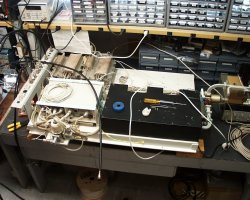
The VIRK. |
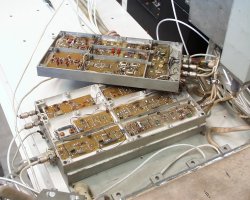
Inside the VIRK modules. |
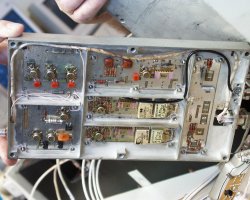
Closeup of the module. |
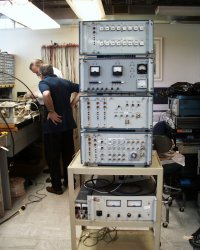 VIRK test equipment. |
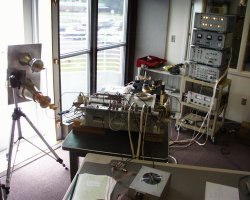
Test setup from inside the Jansky Operations Room. |
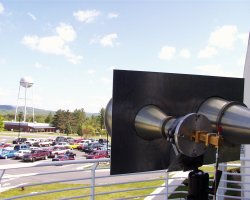
Field tests using NRAO watertower from the Jansky Lab balcony. |
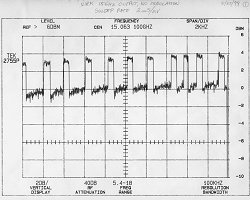
VIRK in unstable mode, zoomed in, showing AM |
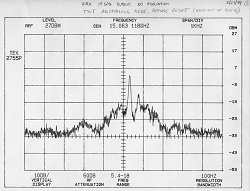
VIRK in unstable mode, wide sweep, before reset (1 kHz/div) |
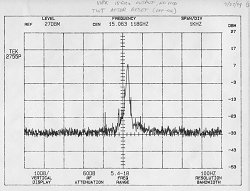
After reset |
